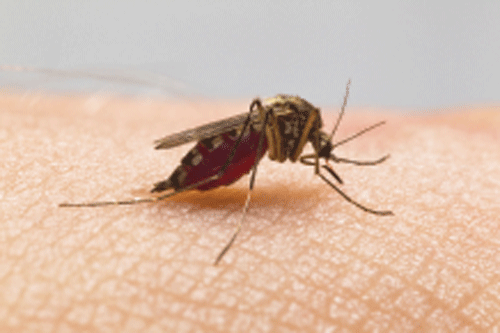From the May 2014 issue of Emergency Medicine Practice, “Emergency Department Management of Mosquito-Borne Illness: Malaria, Dengue, and West Nile Virus.” Reprinted with permission. To access your EMRA member benefit of free online access to all EM Practice, Pediatric EM Practice, and EM Practice Guidelines Update issues, go to www.ebmedicine.net/emra, call 800-249-5770, or email ebm@ebmedicine.net.
- “I work at a small community hospital ED, where we don't have infectious disease specialists to consult. I had a sick-appearing patient in whom I suspected a mosquito-related illness. When I called the patient's primary care doctor to get the patient admitted, she asked me for recommendations regarding admission orders.”
When encountering a patient with suspected mosquito-borne illness, professional help is only a phone call away. The CDC has hotlines and dedicated websites for assistance with the management of malaria, dengue, and West Nile virus. There are also on-call experts who can assist in navigating your case and other conditions. - “I suspected that the patient had dengue, but his fever was resolving. He just came back in severe shock.”
Dengue is a multistage clinical disease. The defervescence of a patient in the first week of the disease can mark the beginning of the “critical phase” of the disease where shock and death are a risk. - “The tourist from Guatemala I saw 2 days ago who had fever, body aches, abdominal pain, and a rash didn't look that sick. He just came back and is in the intensive care unit with multiorgan failure.”
Be alert for any patient traveling from a dengue-endemic region with symptoms concerning for the disease. In this case, the patient had a dengue warning sign (abdominal pain) and should have been admitted for observation. - “The patient said he went to a picnic and was bitten by mosquitoes. Now he feels miserable, with headaches and fever.”
West Nile virus is endemic to all 48 contiguous United States. Use of personal preventive measures – especially the use of DEET-containing insect repellents – is highly encouraged to prevent West Nile virus transmission. - “I just got a call from the local health department. They're upset because I didn't consider West Nile virus in that patient I admitted as having Guillain-Barré last week.”
West Nile virus can cause a demyelinating process similar to Guillain-Barré. Consider West Nile virus testing in any patient with flu-like symptoms and flaccid paralysis. Appropriate monitoring and identification of new cases allows health departments to focus prevention and control efforts. - “The patient said that when he was in Uganda a couple of weeks ago, the hotel he stayed in didn't provide insect nets. When he asked, they told him not to worry – their mosquitoes didn't have malaria.”
Most savvy travelers carry their own nets. Not only does this assure they are in good repair and treated with insecticide, many guesthouses and hotels don't have nets. Advise patients not to risk a malaria infection because of the lack of nets. - “I thought about malaria in that patient with fever and recent travel, but he reported taking chemoprophylactic medications, so I didn't think he could have malaria.”
Even travelers prescribed prophylactic medication can be taking the incorrect regimen for resistance patterns in the areas traveled. In addition, patient nonadherence to most regimens is fairly high. - “I can't believe the patient died at home 3 days after discharge. I sent the laboratory results and asked her to follow up with her primary care provider in a couple of days in case she needed to be treated. She looked well at the time of discharge.”
P falciparum malaria constitutes a medical emergency and patients with a high index of suspicion for it warrant initiation of treatment either as outpatients or inpatients while tests are pending. - “I was proud of diagnosing complicated P falciparum malaria in a patient who had recently returned from a trip to Nigeria with vomiting, but I was confounded to find out that the patient nearly coded while receiving treatment.”
Patients receiving quinidine intravenously need a baseline ECG and cardiac monitoring. Rapid infusion of the drug can cause severe hypotension as well as QT prolongation and arrhythmia. - “The thick and thin smears I ordered were reported negative by the lab, so malaria was ruled out.”
In nonimmune populations, low-level (< 1%) parasitemia can be clinically significant, but it can lead to false negatives with both light microscopy and rapid diagnostic tests. Diagnosis of malaria by light microscopy is technically challenging and, in nonendemic areas, most clinicians' experience is limited. At least 3 slide preparations must be examined to definitively exclude malaria, so ensure that a sufficient amount of blood is sent to the laboratory.



